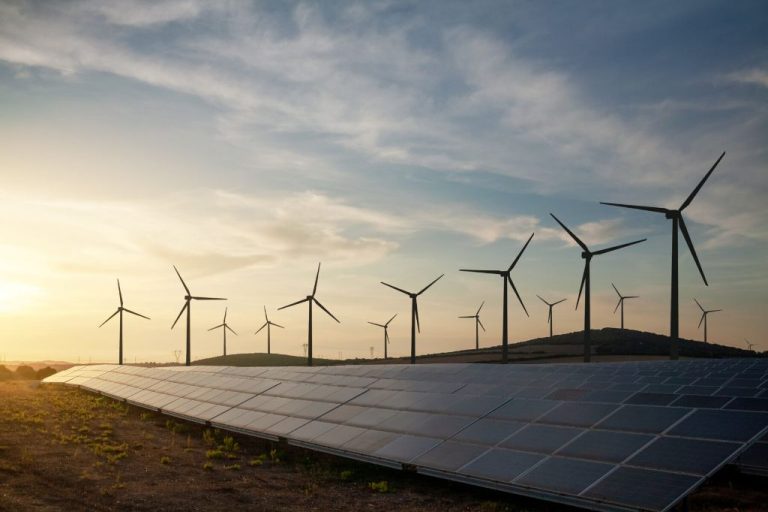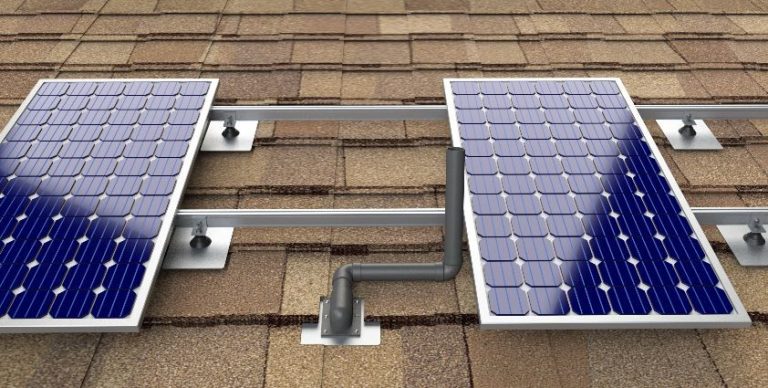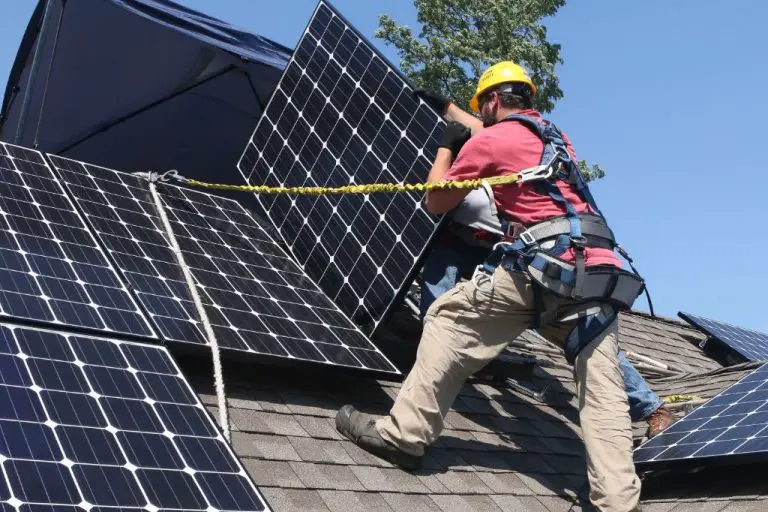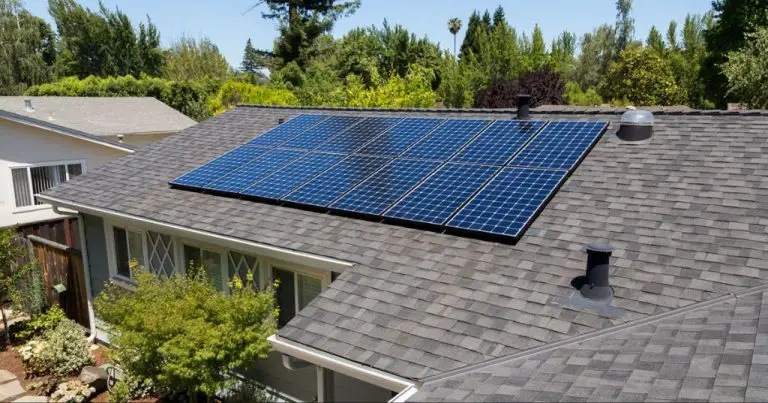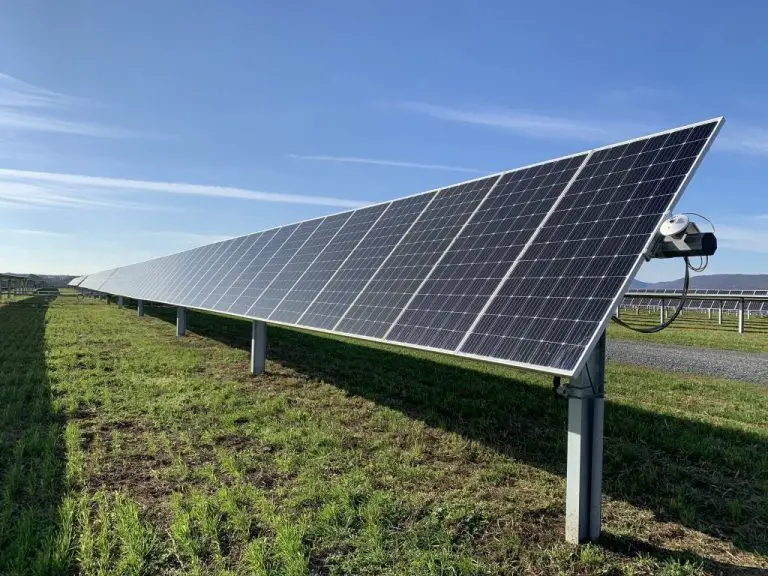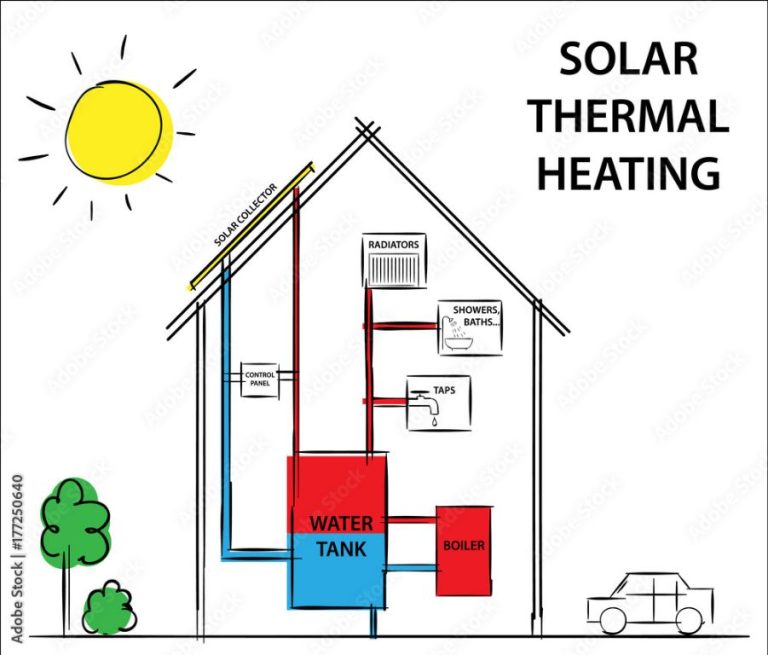What Is Active Solar Construction?
What is Active Solar Construction?
Active solar construction refers to the process of installing solar energy systems that convert sunlight directly into usable electricity or heat. Unlike passive solar design, which takes advantage of sunlight without mechanical devices, active solar systems use panels, collectors, and other equipment to absorb and transform solar energy.
The most common types of active solar construction include:
- Photovoltaic (PV) solar panels that generate electricity from sunlight.
- Solar thermal collectors that heat water for domestic, residential or commercial use.
- Concentrated solar power systems that use mirrors to focus sunlight to drive steam turbines or engines.
Active solar technologies utilize solar cells, mechanical devices and energy storage systems to actively capture, convert and distribute solar energy. The absorbed sunlight is converted directly into usable electrical current or heat, allowing the power to be used immediately or stored for later use. This allows active solar systems to provide electricity, hot water and heat during both day and night.
Compared to passive solar techniques, active systems are generally more complex and expensive to install, but can convert sunlight to useful energy more efficiently and provide power on-demand regardless of sunlight availability. With both active and passive solar, the building design, materials, orientation and site location all play roles in harnessing solar energy effectively.
Photovoltaic Solar Panels
Photovoltaic (PV) solar panels are devices that convert sunlight directly into electricity. PV panels work through the photovoltaic effect, where photons from sunlight knock electrons loose from the atoms in the PV cell material, causing electric current to flow when the front and back sides of the PV panel are connected in an electrical circuit.
There are three main types of PV solar panels:
- Monocrystalline silicon – Made from single crystal silicon, these panels are the most efficient but also most expensive.
- Polycrystalline silicon – Made from multiple silicon crystal fragments, less efficient than monocrystalline but cheaper.
- Thin-film – Made by depositing extremely thin layers of photosensitive materials on surfaces like glass or plastic. Less efficient but cheaper and more flexible.
Pros of PV panels are no ongoing fuel costs, low maintenance, and clean renewable energy production. Cons are the high upfront installation costs, efficiency drops as panels heat up, and the amount of space required for enough sun exposure.
Installing a PV system for a single home costs $15,000-$25,000 on average. Larger commercial scale systems can be in the hundreds of thousands or millions of dollars depending on the power output.
Solar Thermal Systems
Solar thermal systems, also known as solar hot water systems, use solar energy to heat water. They work by collecting heat from the sun and transferring it to water using solar collectors, typically mounted on the roof. The heated water is then stored in an insulated storage tank until needed.
There are two main types of solar thermal systems:
- Active systems – Use pumps to circulate water or a heat transfer fluid through the collectors.
- Passive systems – Rely on gravity and the tendency for water to naturally circulate as it is heated.
Some key pros of solar thermal systems include:
- Provide 50%-80% of domestic hot water needs.
- Can significantly reduce electricity or gas consumption.
- Long lifespan with low maintenance.
- Work even in cloudy or cold weather.
Some potential cons include:
- High upfront installation cost.
- Require adequate space for collectors on roof or ground.
- Limited use in extremely cold climates.
- Can have heat loss at night and cold periods.
The average cost to install a solar thermal system ranges from $3,000-$7,000 depending on system size and type, location, and available rebates/incentives. Overall solar thermal provides an eco-friendly approach to water heating powered by clean, renewable energy from the sun.
Concentrated Solar Power
Concentrated solar power (CSP), also known as concentrated solar thermal, uses mirrors or lenses to concentrate a large area of sunlight onto a small area. The concentrated light is then converted into heat, which drives a steam turbine or heat engine connected to an electrical power generator.
There are four main types of CSP technologies:
- Parabolic trough systems use curved, mirrored troughs to focus sunlight onto a receiver tube filled with a heat transfer fluid, which flows through a series of tubes and heats up a steam generator.
- Power tower systems use a field of flat, movable mirrors (heliostats) to focus sunlight onto a receiver on top of a tower, heating up molten salt that flows through a heat exchanger and steam generator.
- Parabolic dish systems use dish-shaped reflectors to concentrate sunlight onto a receiver at the focal point, powering a Stirling engine connected to a generator.
- Fresnel reflectors use long, thin segments of flat mirrors to focus light onto elevated receivers, heating fluid that transfers heat to a steam generator.
Pros of CSP include the ability to incorporate heat storage and provide dispatchable power on demand. CSP also works well in areas with high direct solar irradiation. However, CSP requires direct sunlight and large land areas. Initial costs are higher than solar photovoltaics, but CSP with storage can provide renewable energy after sunset.
Typical costs range from 10-30 cents per kWh for CSP plants. CSP has been implemented at scales from 1-400 MW at plants around the world, with larger scales on the horizon.
Active Solar Applications
Active solar systems have a variety of applications for harnessing the sun’s energy. Here are some of the main ways active solar is utilized:
Generating Electricity
Photovoltaic panels directly convert sunlight into electricity through the photovoltaic effect. The direct current (DC) generated by solar panels is fed into inverters to convert it into alternating current (AC), which can then power homes, businesses, and the grid. Solar PV systems can be installed on rooftops, ground-mounted, or integrated into building materials.
Heating Water and Spaces
Solar thermal collectors absorb sunlight to heat up a fluid, usually water or antifreeze. This thermal energy can then be used to heat domestic hot water, swimming pools, or space heating systems through radiant floors, forced air systems, or radiators. Solar thermal is often used to preheat water before it goes into a conventional system.
Solar Cooling Technologies
The heat from solar thermal collectors can also be used to drive solar cooling systems through absorption chillers. This process uses the sun’s energy to evaporate a refrigerant that is then condensed to provide cooling. Solar cooling is not yet widely adopted but holds potential for providing renewable air conditioning.
Active Solar System Components
The key components that make up an active solar energy system include:
- Photovoltaic solar panels – These are modules made up of individual solar cells that directly convert sunlight into electricity through the photovoltaic effect.
- Solar inverters – These convert the direct current (DC) output of solar panels into alternating current (AC) which can be fed into the commercial electrical grid or used directly in standalone off-grid systems.
- Solar thermal collectors – These absorb sunlight and convert it into heat. Common types include flat-plate collectors, evacuated tube collectors, and concentrating collectors.
- Pumps and heat exchanger – These are used in active solar thermal systems to transfer the collected heat via a heat-transfer fluid to its point of usage for water heating, space heating, or industrial processes.
Additionally, solar trackers may be used to optimize the orientation of solar panels or concentrators toward the sun and maximize energy production throughout the day. Monitoring and control equipment is also key for properly operating the solar system.
Installation and Maintenance
Installing an active solar system requires expertise across several disciplines. Proper installation ensures the system operates efficiently and safely over its lifetime. The installation process involves:
- Assessing the site and desired system size
- Obtaining permits and approvals from local authorities
- Sourcing high-quality solar components and ancillary equipment
- Mounting and wiring the solar arrays and other hardware
- Integrating with the existing electrical system and grid (if applicable)
- Testing for proper operation and safety
Qualified solar installers possess skills in areas such as electrical systems, construction, and mechanical engineering. Hands-on training and certification demonstrates competency. Subcontractors like electricians and roofers complement the installer’s expertise.
Proper maintenance maximizes an active solar system’s performance and longevity. This involves activities like:
- Inspecting, cleaning, and repairing solar arrays and components
- Monitoring energy production and diagnosing faults
- Updating software and control systems
- Replacing worn components like inverters
Ongoing maintenance represents roughly 10-15% of a solar system’s lifetime costs. Most solar equipment carries 10-25 year warranties, lowering the need for major repairs during this period. Preventative maintenance optimizes the system’s return on investment.
Economics and Environmental Impact
Active solar systems require a significant upfront investment, but the long-term return on investment can make them financially viable. The costs of solar panels, inverters, batteries, and other system components have dropped dramatically in recent years. At the same time, state and federal government incentives like tax credits, rebates, and net metering can further reduce costs and improve ROI.
The length of the payback period varies greatly based on system size, electricity rates, government incentives, and sun exposure. But solar energy systems can offer 20+ year lifespans, essentially providing free electricity for many years after the payback period. This makes active solar a smart long-term investment for homeowners and businesses.
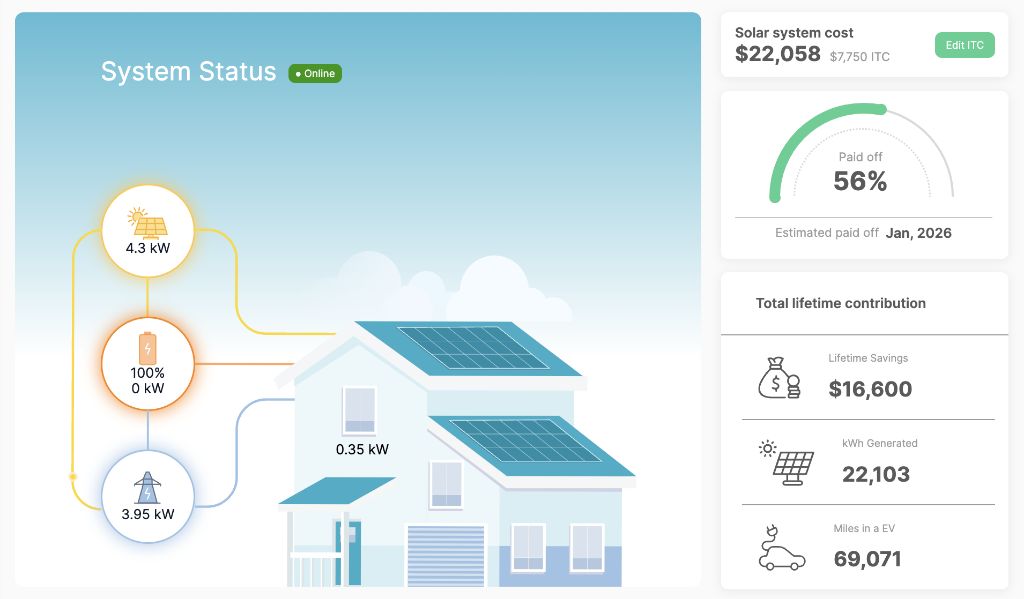
Solar energy also provides major environmental benefits by reducing reliance on fossil fuels. Each kilowatt of solar energy produced means less coal, natural gas, or other carbon-emitting resources need to be burned. Widespread adoption of active solar could significantly cut greenhouse gas emissions and air pollution. This helps combat climate change and improves public health.
Challenges and Limitations
While active solar systems offer many benefits, there are some challenges and limitations to be aware of:
High Upfront Costs
The most significant barrier to widespread active solar adoption is the high initial installation cost. Complete photovoltaic and solar thermal systems require a major upfront investment that may deter some homeowners and businesses.
Intermittency of Sunlight
Active solar systems rely on consistent direct sunlight to effectively generate electricity or heat. Cloudy days and nighttime reduce output. Energy storage systems can help mitigate intermittency, but add even more upfront costs.
Aesthetic Concerns
Some homeowners associations and neighborhoods impose restrictions on visible solar installations for aesthetic reasons. Advances in solar roofing materials can help panels and tiles blend into rooftops, but other equipment remains visible.
Future Outlook
The future outlook for active solar construction is very positive. With rising energy demands, increasing climate change concerns, and improving solar technology, active solar power is projected to continue its rapid growth in the coming decades.
Many experts predict that solar power will become one of the world’s main electricity sources by 2050. Solar already provides around 3% of global electricity generation, but that figure is expected to reach 20-50% by mid-century.
Several factors point towards the growing global adoption of active solar power:
- Falling costs – Solar panel prices have dropped over 90% in the last decade, making solar power competitive with fossil fuels.
- Supportive policies – Over 130 countries have renewable energy targets, incentives and mandates to encourage solar adoption.
- Corporate investments – Major companies like Amazon, Apple and Google are investing billions into large-scale solar projects.
- Grid integration – Developments in energy storage and smart grids will enable greater integration of solar power into energy systems.
On the technology front, improvements in solar cell efficiency, system performance and new advanced solar technologies like floating solar and solar paint promise to further drive growth.
Many national and international energy projections have solar power playing a major role in future electricity supply:
- The IEA predicts solar PV capacity will reach over 4700 gigawatts by 2050 under its Sustainable Development Scenario.
- The IRENA estimates that under an energy transition pathway consistent with the Paris Agreement, solar power could supply up to 22% of global electricity by 2030 and nearly 50% by 2050.
- According to projections by the U.S. Energy Information Administration, global solar generation capacity will increase from about 580 gigawatts in 2018 to over 2500 gigawatts by 2050.
Realizing these bright projections for solar will require sustained policy support, technological innovations, grid flexibility and storage solutions. But themomentum behind active solar power continues to accelerate, promising a sunnier energy future.

